247 scholarly books by University Press of New England and 34
have author last names that start with S
247 scholarly books by University Press of New England and 34
247 scholarly books by University Press of New England
34 have author last names that start with S have author last names that start with S
34 have author last names that start with S have author last names that start with S
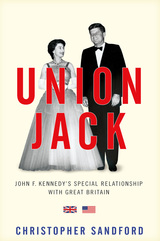
Union Jack
JFK's Special Relationship with Great Britain
Christopher Sandford
University Press of New England, 2017
John F. Kennedy carried on a lifelong love affair with England and the English. From his speaking style to his tastes in art, architecture, theater, music, and clothes, his personality reflected his deep affinity for a certain kind of idealized Englishness. In Union Jack, noted biographer Christopher Sandford tracks Kennedy’s exploits in Great Britain between 1935 and 1963, and looks in-depth at the unique way Britain shaped JFK throughout his adult life and how JFK charmed British society. This mutual affinity took place against a backdrop of some of the twentieth century’s most profound events: The Great Depression, Britain’s appeasement of Hitler, the Second World War, the reconstruction of Western Europe, the development and rapid proliferation of weapons of mass destruction, and the ideological schism between East and West. Based on extensive archival work as well as firsthand accounts from former British acquaintances, including old girlfriends, Union Jack charts two paths in the life of JFK. The first is his deliberate, long-term struggle to escape the shadow of his father, Joseph Kennedy, former U.S. Ambassador to Great Britain. The second is the emergence of a peculiarly American personality whose consistently pro-British, rallying rhetoric was rivaled only by Winston Churchill. By explaining JFK’s special relationship with Great Britain, Union Jack offers a unique and enduring portrait of another side of this historic figure in the centennial year of his birth.
[more]

William Sargent
University Press of New England
Surviving almost unmolested for 300 million years, the horseshoe crab is now the object of an intense legal and ethical struggle involving marine biologists, environmentalists, US government officials, biotechnologists, and international corporations. The source of this friction is the discovery 25 years ago that the blood of these ancient creatures serves as the basis for the most reliable test for the deadly and ubiquitous gram-negative bacteria. These bacteria are responsible for life-threatening diseases like menengitis, typhoid, E. coli, Legionnaire’s Disease and toxic shock syndrome. Because every drug certified by the FDA must be tested using the horseshoe crab derivative known as Limulus lysate, a multimillion dollar industry has emerged involving the license to “bleed” horseshoe crabs and the rights to their breeding grounds. Since his youthful fascination with these ancient creatures, William Sargent has spent much of his life observing, studying, and collecting horseshoe crabs. As a result, he presents a thoroughly accessible insider’s guide to the discovery of the lysate test, the exploitation of the crabs at the hands of multinational pharmaceutical conglomerates, local fishing interests, and the legal and governmental wrangling over the creatures’ ultimate fate. In the end, the story of the horseshoe crab is a sobering reflection on the unintended consequences of scientific progress and the danger of self-regulated industries controlling a limited natural resource.
[more]

The House on Ipswich Marsh
Exploring the Natural History of New England
William Sargent
University Press of New England, 2015
In 2003, Bill Sargent bought a big pink house in Ipswich, Massachusetts. His home sits on what is known as the Great Marsh, a fascinating patch of wetland shared by Massachusetts and New Hampshire. Sargent received a grant to study some of the rare and endangered ground-nesting birds that inhabit the public land adjacent to his property. Ipswich Marsh is about these birds, but much else as well. Organized by the seasons of the year, The House on Ipswich Marsh features Sargent’s trademark interplay of information about the natural world, ecology, and politics. In “Spring,” the reader learns about the geological history of the Marsh; the migration patterns of bobolinks; the courtship flights of woodcocks; ticks and Lyme disease; the mating of horseshoe crabs and the underwater arrival of zooplankton, fish eggs, and moon jellyfish. “Summer” introduces plate tectonics and glaciers; sea level rise and glacial rebound; diving at night among lobsters and stone crabs; a day on Crane’s Beach; and a bike trip on Argilla Road. “Autumn” illuminates fishing; the natural and cultural history of Hog Island; harvest time on Appelton Farm; and a Native American Thanksgiving. “Winter” describes the formation of dunes and sandbars; the mating behavior of seals; coyote hunting deer at night; and a late-winter blizzard in which Sargent spies a red-tailed hawk, waiting, like the author, for the return of spring.
[more]
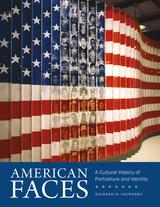
American Faces
A Cultural History of Portraiture and Identity
Richard H. Saunders
University Press of New England, 2016
Portraits. We know what they are, but why do we make them? Americans have been celebrating themselves in portraits since the arrival of the first itinerant portrait painters to the colonies. They created images to commemorate loved ones, glorify the famous, establish our national myths, and honor our shared heroes. Whether painting in oil, carving in stone, casting in bronze, capturing on film, or calculating in binary code, we spend considerable time creating, contemplating, and collecting our likenesses. In this sumptuously illustrated book, Richard H. Saunders explores our collective understanding of portraiture, its history in America, how it shapes our individual and national identity, and why we make portraits—whether for propaganda and public influence or for personal and private appreciation. American Faces is a rich and fascinating view of ourselves.
[more]
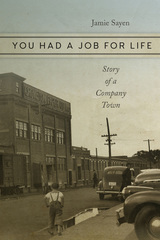
Jamie Sayen
University Press of New England
Absentee owners. Single-minded concern for the bottom line. Friction between workers and management. Hostile takeovers at the hands of avaricious and unaccountable multinational interests. The story of America’s industrial decline is all too familiar—and yet, somehow, still hard to fathom. Jamie Sayen spent years interviewing residents of Groveton, New Hampshire, about the century-long saga of their company town. The community’s paper mill had been its economic engine since the early twentieth century. Purchased and revived by local owners in the postwar decades, the mill merged with Diamond International in 1968. It fell victim to Anglo-French financier James Goldsmith’s hostile takeover in 1982, then suffered through a series of owners with no roots in the community until its eventual demise in 2007. Drawing on conversations with scores of former mill workers, Sayen reconstructs the mill’s human history: the smells of pulp and wood, the injuries and deaths, the struggles of women for equal pay and fair treatment, and the devastating impact of global capitalism on a small New England town. This is a heartbreaking story of the decimation of industrial America.
[more]
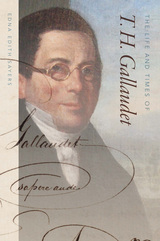
The Life and Times of T. H. Gallaudet
Edna Edith Sayers
University Press of New England, 2017
Edna Edith Sayers has written the definitive biography of T. H. Gallaudet (1787–1851), celebrated today as the founder of deaf education in America. Sayers traces Gallaudet’s work in the fields of deaf education, free common schools, literacy, teacher education and certification, and children’s books, while also examining his role in reactionary causes intended to uphold a white, Protestant nation thought to have existed in New England’s golden past. Gallaudet’s youthful social and political entanglements included involvement with Connecticut’s conservative, state-established Congregational Church, the Federalist Party, and the Counter-Enlightenment ideals of Yale (where he was a student). He later embraced anti-immigrant, anti-abolition, and anti-Catholic efforts, and supported the expatriation of free African-Americans to settlements on Africa’s west coast. As much a history of the paternalistic, bigoted, and class-conscious roots of a reform movement as a story of one man’s life, this landmark work will surprise and enlighten both the hearing and Deaf worlds.
[more]

Birding the Hudson Valley
Kathryn J. Schneider
University Press of New England, 2018
Although an estimated four hundred thousand Hudson Valley residents feed, observe, or photograph birds, the vast majority of New Yorkers enjoy their birdwatching activities mostly around the home. Kathryn J. Schneider’s engaging site guide provides encouragement for bird enthusiasts to expand their horizons. More than just a collection of bird-finding tips, this book explores Hudson Valley history, ecology, bird biology, and tourism. It describes sites in every county in the region, including farms, grasslands, old fields, wetlands, orchards, city parks, rocky summits, forests, rivers, lakes, and salt marshes. Designed for birders of all levels of skill and interest, this beautifully illustrated book contains explicit directions to more than eighty locations, as well as useful species accounts and hints for finding the valley’s most sought-after birds.
[more]

From Text to Context
The Turn to History in Modern Judaism
Ismar Schorsch
University Press of New England, 2003
Essays examining the emergence of Jewish scholarship during the period 1818 - 1919, concentrating on the Wissenschaft des Judentums movement.
[more]

The Language of Fiction
A Writer’s Stylebook
Brian Shawver
University Press of New England, 2013
Grand themes and complex plots are just the beginning of a great piece of fiction. Mastering the nuts and bolts of grammar and prose mechanics is also an essential part of becoming a literary artist. This indispensable guide, created just for writers of fiction, will show you how to take your writing to the next level by exploring the finer points of language. Funny, readable, and wise, this book explores the tools of the fiction writer’s trade, from verb tenses to pronouns to commas and beyond. Filled with examples from the best-seller lists of today and yesterday, it will help you consider the hows and whys of language, and how mastery of them can be used to achieve clarity and grace of expression in your own work. Here, you’ll find Encouragement and advice to face the big questions: Past or present tense? Comma or semicolon? Italic or roman? Should your dialogue be phonetically rendered, or follow standard rules of grammar? (And where does that pesky quotation mark go, again?) Warning signs of the betrayal of language, and ways to avoid it: Unwitting rhymes, repetition, redundancy, cliché, and the inevitable failure of vocabulary How-to (and how-not-to) examples: The grammatical “mistakes” of Charles Dickens; ambiguous pronoun usage by Nathaniel Hawthorne; the minefield of paragraph fragments found in one of today’s most successful authors.
[more]
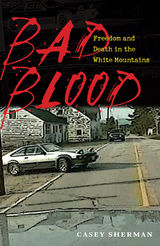
Bad Blood
Freedom and Death in the White Mountains
Casey Sherman
University Press of New England, 2012
In the shadow of the fallen Old Man of the Mountain, on a lonely stretch of mountain road, two men lay dead. A spasm of violence that took only a few minutes to play out leaves a community divided and searching for answers. From the author of newly released Boston Strong: A City’s Triumph Over Tragedy, about the 2013 Boston Marathon bombings, Bad Blood is the riveting account of the long-standing feud between Franconia, New Hampshire, police officer Bruce McKay, 48, and Liko Kenney, 24. In May 2007, Kenney shot and killed Officer McKay, following a dramatic chase that began with a routine traffic stop. Kenney, cousin of ski legend Bode Miller, was then shot and killed by a shadowy passerby. Almost immediately, the tragic incident revealed deep tensions within this otherwise quiet community in the White Mountains with charges that Kenney was a hell-raiser and mentally unstable and counter-charges that Officer McKay was a rogue cop who dispensed justice as a way to settle personal scores. Striving to get at the truth of the story, the author uncovers a complicated mix of personalities and motivations. Local and statewide interests clash while regional and national media— and even YouTube viewers— supply ready stereotypes to fit their agendas. Amid larger questions of the meaning of individual freedom we are, ultimately, helpless witnesses to an inevitable clash of characters.
[more]

The Ice Bucket Challenge
Pete Frates and the Fight against ALS
Casey Sherman
University Press of New England, 2017
While everyone knows of the Ice Bucket Challenge, the viral craze that swept the nation in summer 2014, too few know the truly inspirational story behind it. Pete Frates was a man at war with his own body. A man whose love for others was unshakable. A man who refused to fight alone, and in so doing mobilized a global army to combat one of the most devastating diseases on earth: ALS, or Lou Gehrig’s disease. When disease crippled Frates, the former Boston College baseball star turned tragedy into inspiration. Pete’s story is a testament to the power of love, the steadfastness of family, the generosity of strangers, and the compassion of crowds. Half of the authors’ proceeds will go to the Frates family.
[more]
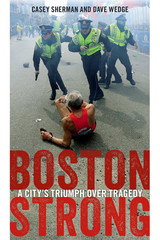
Boston Strong
A City's Triumph over Tragedy
Casey Sherman
University Press of New England, 2015
Veteran journalists Casey Sherman and Dave Wedge have written the definitive inside look at the Boston Marathon bombings with a unique, Boston-based account of the events that riveted the world. From the Tsarnaev brothers’ years leading up to the act of terror to the bomb scene itself (which both authors witnessed first-hand within minutes of the blast), from the terrifying police shootout with the suspects to the ultimate capture of the younger brother, Boston Strong: A City’s Triumph over Tragedy reports all the facts—and so much more. Based on months of intensive interviews, this is the first book to tell the entire story through the eyes of those who experienced it. From the cop first on the scene, to the detectives assigned to the manhunt, the authors provide a behind-the-scenes look at the investigation. More than a true-crime book, Boston Strong also tells the tragic but ultimately life-affirming story of the victims and their recoveries and gives voice to those who lost loved ones. With their extensive reporting, writing experience, and deep ties to the Boston area, Sherman and Wedge create the perfect match of story, place, and authors. If you’re only going to read one book on this tragic but uplifting story, this is it.
[more]
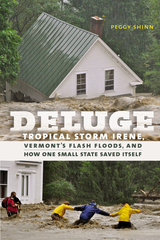
Deluge
Tropical Storm Irene, Vermont’s Flash Floods, and How One Small State Saved Itself
Peggy Shinn
University Press of New England, 2013
On August 28, 2011, after pounding the Caribbean and the U.S. Eastern seaboard for more than a week, Hurricane Irene finally made landfall in New Jersey. As the storm headed into New England, it was quickly downgraded to a tropical storm. And by Sunday afternoon, national news outlets were giving postmortems on the damage. Except for some flooding in low-lying areas, New York City—Irene’s biggest target—had escaped its worst-case scenario. Story over. But the story wasn’t over. As Irene’s eye drifted north, its bands of heavy rains twisted westward over Vermont’s Green Mountains. The mountains forced these bands upward, wringing the rain out of them like water from a sponge. Streams and rivers were transformed into torrents of brown water and debris, gouging mountainsides, reshaping valleys, washing out roads, pulling apart bridges, and carrying away homes, livestock, and automobiles. For weeks, mountain towns were isolated, with no way in or out, and thousands of people were left homeless. In the immediate aftermath of the disaster, it fell on the shoulders of ordinary Vermonters to help victims and rebuild the state. Deluge is the complete story of the floods, the rescue, and the recovery, as seen through the eyes of the people who lived through them: Wilmington’s Lisa Sullivan, whose bookstore was flooded, and town clerk Susie Haughwout, who saved the town records; Tracy Payne, who lost her home in Jamaica—everything in it, and the land on which it sat; Geo Honigford in South Royalton, who lost his crops, but put his own mess on hold to help others in the town; the men who put U.S. Route 4 back together at breakneck speed; and the entire village of Pittsfield, completely isolated after the storm, and its inspirational story of real community.
[more]
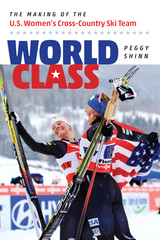
World Class
The Making of the U.S. Women's Cross-Country Ski Team
Peggy Shinn
University Press of New England, 2018
What makes a great team? Sports journalist Peggy Shinn answers this question in her enthralling account of the dramatic rise of the U.S. women’s cross-country ski team, winners of eight medals at three world championships over the past five years. Shinn’s story—based on dozens of interviews with athletes, coaches, parents, spouses, and friends—paints a vivid picture of the obstacles that America’s female athletes must overcome not just to ski with the world’s best, but to beat them. In a sport where U.S. women have toiled for decades, mostly in the middle or the back of the pack, the development of a world-class team attests to the heady combination of a transformational leader, a coach who connects with his athletes, the super-fast individual skiers who are also conscientious teammates—and a bit of good luck. This is the story of Kikkan Randall, Liz Stephen, Holly Brooks, Jessie Diggins, Ida Sargent, Sadie Bjornsen, Sophie Caldwell, Rosie Brennan, and coach Matt Whitcomb—and how they created the perfect team.
[more]

Loving Her
Community-Building as Crime Control
Shockley
University Press of New England, 1997
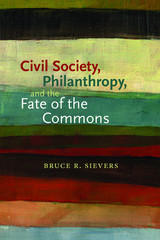
Civil Society, Philanthropy, and the Fate of the Commons
Bruce R. Sievers
University Press of New England, 2010
Among the greatest challenges facing humanity in the twenty-first century is that of sustaining a healthy civil society, which depends upon managing the tension between individual and collective interests. Bruce R. Sievers explores this issue by investigating ways to balance the public and private sides of modern life in a manner that allows realization of the ideal of individual freedom and, at the same time, makes possible the effective pursuit of the common good. He traces the development of civil society from the seventeenth-century Dutch Republic and the eighteenth-century Scottish Enlightenment, analyzes its legacy for modern political life, and explores how historical trends in the formation of civil society and philanthropy aid or impede our achievement of public goods in the modern era.
[more]
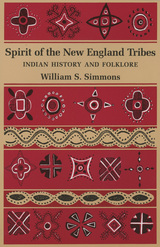
Spirit of the New England Tribes
Indian History and Folklore, 1620–1984
William S. Simmons
University Press of New England, 1986
Spanning three centuries, this collection traces the historical evolution of legends, folktales, and traditions of four major native American groups from their earliest encounters with European settlers to the present. The book is based on some 240 folklore texts gathered from early colonial writings, newspapers, magazines, diaries, local histories, anthropology and folklore publications, a variety of unpublished manuscript sources, and field research with living Indians.
[more]

Ghost Riders of Baghdad
Soldiers, Civilians, and the Myth of the Surge
Daniel A. Sjursen
University Press of New England, 2015
From October 2006 to December 2007, Daniel A. Sjursen—then a U.S. Army lieutenant—led a light scout platoon across Baghdad. The experiences of Ghost Rider platoon provide a soldier’s-eye view of the incredible complexities of warfare, peacekeeping, and counterinsurgency in one of the world’s most ancient cities. Sjursen reflects broadly and critically on the prevailing narrative of the surge as savior of America’s longest war, on the overall military strategy in Iraq, and on U.S. relations with ordinary Iraqis. At a time when just a handful of U.S. senators and representatives have a family member in combat, Sjursen also writes movingly on questions of America’s patterns of national service. Who now serves and why? What connection does America’s professional army have to the broader society and culture? What is the price we pay for abandoning the model of the citizen soldier? With the bloody emergence of ISIS in 2014, Iraq and its beleaguered, battle-scarred people are again much in the news. Unlike other books on the U.S. war in Iraq, Ghost Riders of Baghdad is part battlefield chronicle, part critique of American military strategy and policy, and part appreciation of Iraq and its people. At once a military memoir, history, and cultural commentary, Ghost Riders of Bahdad delivers a compelling story and a deep appreciation of both those who serve and the civilians they strive to protect. Sjursen provides a riveting addition to our understanding of modern warfare and its human costs.
[more]

Observing America’s Jews
Marshall Sklare
University Press of New England, 2006
Collected essays by a preeminent authority on American Jewish history.
[more]

Fanny & Joshua
The Enigmatic Lives of Frances Caroline Adams and Joshua Lawrence Chamberlain
Diane Monroe Smith
University Press of New England, 2013
Joshua Chamberlain has fascinated historians and readers ever since his service in the Civil War caused his commanding officers to sit up and take notice when the young professor was on the field. What makes a man a gifted soldier and natural leader? In this compelling book, Diane Monroe Smith argues that finding the answer requires a consideration of Chamberlain’s entire life, not just his few years on the battlefield. Truly understanding Chamberlain is impossible, Smith maintains, without exploring the life of Joshua’s soul mate and wife of almost fifty years, Fanny. In this dual biography, Fanny emerges as a bright, talented woman who kept Professor, General, and then Governor Chamberlain on his toes. But you don’t have to take Smith’s word for it. Liberally quoting from years of correspondence, the author invites you to judge for yourself.
[more]
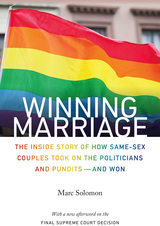
Winning Marriage
The Inside Story of How Same-Sex Couples Took on the Politicians and Pundits—and Won
Marc Solomon
University Press of New England, 2015
In this updated, paperback edition of Winning Marriage, Marc Solomon, a veteran leader in the movement for marriage equality, gives the reader a seat at the strategy-setting and decision-making table in the campaign to win and protect the freedom to marry. With depth and grace he reveals the inner workings of the advocacy movement that has championed and protected advances won in legislative, court, and electoral battles over the years since the landmark Massachusetts ruling guaranteeing marriage for same-sex couples for the first time. The paperback edition includes a new afterword on the historic 2015 Supreme Court ruling on marriage that includes practical lessons from the marriage campaign that are applicable to other social movements. From the gritty clashes in the state legislatures of Massachusetts and New York to the devastating loss at the ballot box in California in 2008 and subsequent ballot wins in 2012 to the joys of securing President Obama’s support and achieving ultimate victory in the Supreme Court, Marc Solomon has been at the center of one of the great civil and human rights movements of our time. Winning Marriage recounts the struggle with some of the world’s most powerful forces—the Catholic hierarchy, the religious right, and cynical ultraconservative political operatives—and the movement’s eventual triumph.
[more]
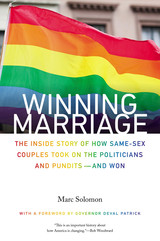
Winning Marriage
The Inside Story of How Same-Sex Couples Took on the Politicians and Pundits—and Won
Marc Solomon
University Press of New England, 2014
Ten years ago no state allowed same-sex couples to marry, support for gay marriage nationwide hovered around 30 percent, and politicians everywhere thought of it as the third rail of American politics—draw near at your peril. Today, same-sex couples can marry in seventeen states, polls consistently show majority support, and nearly three-quarters of Americans believe legalization is inevitable. In Winning Marriage Marc Solomon, a veteran leader in the movement for marriage equality, gives the reader a seat at the strategy-setting and decision-making table in the campaign to win and protect the freedom to marry. With depth and grace he reveals the inner workings of the advocacy movement that has championed and protected advances won in legislative, court, and electoral battles over the decade since the landmark Massachusetts ruling guaranteeing marriage for same-sex couples for the first time. From the gritty battles in the state legislatures of Massachusetts and New York to the devastating loss at the ballot box in California in 2008 and subsequent ballot wins in 2012 to the joyous victories of securing President Obama’s support and prevailing in the Supreme Court, Marc Solomon has been at the center of one of the great civil and human rights movements of our time. Winning Marriage recounts the struggle with some of the world’s most powerful forces—the Catholic hierarchy, the religious right, and cynical ultraconservative political operatives—and the movement’s eventual triumph.
[more]

Susan G. Solomon
University Press of New England
In 1961, famed architect Louis I. Kahn (1901–1974) received a commission to design a new synagogue. His client was one of the oldest Sephardic Orthodox congregations in the United States: Philadelphia’s Mikveh Israel. Due to the loss of financial backing, Kahn’s plans were never realized. Nevertheless, the haunting and imaginative schemes for Mikveh Israel remain among Kahn’s most revered designs. Susan G. Solomon uses Kahn’s designs for Mikveh Israel as a lens through which to examine the transformation of the American synagogue from 1955 to 1970. She shows how Kahn wrestled with issues that challenged postwar Jewish institutions and evaluates his creative attempts to bridge modernism and Judaism. She argues that Kahn provided a fresh paradigm for synagogues, one that offered innovations in planning, decoration, and the incorporation of light and nature into building design.
[more]
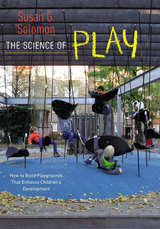
The Science of Play
How to Build Playgrounds That Enhance Children's Development
Susan G. Solomon
University Press of New England, 2014
Poor design and wasted funding characterize today’s American playgrounds. A range of factors—including a litigious culture, overzealous safety guidelines, and an ethos of risk aversion—have created uniform and unimaginative playgrounds. These spaces fail to nurture the development of children or promote playgrounds as an active component in enlivening community space. Solomon’s book demonstrates how to alter the status quo by allying data with design. Recent information from the behavioral sciences indicates that kids need to take risks; experience failure but also have a chance to succeed and master difficult tasks; learn to plan and solve problems; exercise self-control; and develop friendships. Solomon illustrates how architects and landscape architects (most of whom work in Europe and Japan) have already addressed these needs with strong, successful playground designs. These innovative spaces, many of which are more multifunctional and cost effective than traditional playgrounds, are both sustainable and welcoming. Having become vibrant hubs within their neighborhoods, these play sites are models for anyone designing or commissioning an urban area for children and their families. The Science of Play, a clarion call to use playground design to deepen the American commitment to public space, will interest architects, landscape architects, urban policy makers, city managers, local politicians, and parents.
[more]
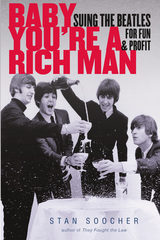
Baby You're a Rich Man
Suing the Beatles for Fun and Profit
Stan Soocher
University Press of New England, 2015
The Beatles, the most popular, influential, and important band of all time, have been the subject of countless books of biography, photography, analysis, history, and conjecture. But this long and winding road has produced nothing like Baby You’re a Rich Man, the first book devoted to the cascade of legal actions engulfing the band, from the earliest days of the loveable mop-heads to their present prickly twilight of cultural sainthood. Part Beatles history, part legal thriller, Baby You’re a Rich Man begins in the era when manager Brian Epstein opened the Pandora’s box of rock ’n’ roll merchandising, making a hash of the band’s licensing and inviting multiple lawsuits in the United States and the United Kingdom. The band’s long breakup period, from 1969 to 1971, provides a backdrop to the Machiavellian grasping of new manager Allen Klein, who unleashed a blizzard of suits and legal motions to take control of the band, their music, and Apple Records. Unsavory mob associate Morris Levy first sued John Lennon for copyright infringement over “Come Together,” then sued him again for not making a record for him. Phil Spector, hired to record a Lennon solo album, walked off with the master tapes and held them for a king’s ransom. And from 1972 to 1975, Lennon was the target of a deportation campaign personally spearheaded by key aides of President Nixon (caught on tape with a drug-addled Elvis Presley) that wound endlessly through the courts. In Baby You’re a Rich Man, Stan Soocher ties the Beatles’ ongoing legal troubles to some of their most enduring songs. What emerges is a stirring portrait of immense creative talent thriving under the pressures of ill will, harassment, and greed. Praise for They Fought the Law: Rock Music Goes to Court “Stan Soocher not only ably translates the legalese but makes both the plaintiffs and defendants engrossingly human. Mandatory reading for every artist who tends to skip his contract’s fine print.”—Entertainment Weekly
[more]
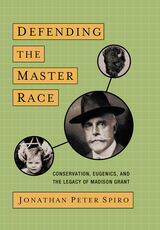
Defending the Master Race
Conservation, Eugenics, and the Legacy of Madison Grant
Jonathan Spiro
University Press of New England, 2008
Scholars have labeled Madison Grant everything from the “nation’s most influential racist” to the “greatest conservationist that ever lived.” His life illuminates early twentieth-century America as it was heading toward the American Century, and his legacy is still very much with us today, from the speeches of immigrant-bashing politicians to the international efforts to arrest climate change. This insightful biography shows how Grant worked side-by-side with figures such as Theodore Roosevelt to found the Bronx Zoo, preserve the California redwoods, and save the American bison from extinction. But Grant was also the leader of the eugenics movement in the United States. He popularized the infamous notions that the blond-haired, blue-eyed Nordics were the “master race” and that the state should eliminate members of inferior races who were of no value to the community. Grant’s behind-the-scenes machinations convinced Congress to enact the immigration restriction legislation of the 1920s, and his influence led many states to ban interracial marriage and sterilize thousands of “unworthy” citizens. Although most of the relevant archival materials on Madison Grant have mysteriously disappeared over the decades, Jonathan Spiro has devoted many years to reconstructing the hitherto concealed events of Grant’s life. His astonishing feat of detective work reveals how the founder of the Bronx Zoo wound up writing the book that Adolf Hitler declared was his “bible.”
[more]

Danna Staaf
University Press of New England
Before there were mammals on land, there were dinosaurs. And before there were fish in the sea, there were cephalopods—the ancestors of modern squid and Earth’s first truly substantial animals. Cephalopods became the first creatures to rise from the seafloor, essentially inventing the act of swimming. With dozens of tentacles and formidable shells, they presided over an undersea empire for millions of years. But when fish evolved jaws, the ocean’s former top predator became its most delicious snack. Cephalopods had to step up their game. Many species streamlined their shells and added defensive spines, but these enhancements only provided a brief advantage. Some cephalopods then abandoned the shell entirely, which opened the gates to a flood of evolutionary innovations: masterful camouflage, fin-supplemented jet propulsion, perhaps even dolphin-like intelligence. Squid Empire is an epic adventure spanning hundreds of millions of years, from the marine life of the primordial ocean to the calamari on tonight’s menu. Anyone who enjoys the undersea world—along with all those obsessed with things prehistoric—will be interested in the sometimes enormous, often bizarre creatures that ruled the seas long before the first dinosaurs.
[more]

Archeology in the Adirondacks
The Last Frontier
David R. Starbuck
University Press of New England, 2018
While numerous books have been written about the great camps, hiking trails, and wildlife of the Adirondacks, noted anthropologist David R. Starbuck offers the only archeological guide to a region long overlooked by archeologists who thought that “all the best sites” were elsewhere. This beautifully illustrated volume focuses on the rich and varied material culture brought to the mountains by their original Native American inhabitants, along with subsequent settlements created by soldiers, farmers, industrialists, workers, and tourists. Starbuck examines Native American sites on Lake George and Long Lake; military and underwater sites throughout the Lake George, Fort Ticonderoga, and Crown Point regions; old industrial sites where forges, tanneries, and mines once thrived; farms and the rural landscape; and many other sites, including the abandoned Frontier Town theme park, the ghost town of Adirondac, Civilian Conservation Corps camps, ski areas, and graveyards.
[more]
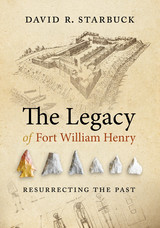
The Legacy of Fort William Henry
Resurrecting the Past
David R. Starbuck
University Press of New England, 2014
Fort William Henry, America’s early frontier fort at the southern end of Lake George, New York, was a flashpoint for conflict between the British and French empires in America. The fort is perhaps best known as the site of a massacre of British soldiers by Native Americans allied with the French that took place in 1757. Over the past decade, new and exciting archeological findings, in tandem with modern forensic methods, have changed our view of life at the fort prior to the massacre, by providing physical evidence of the role that Native Americans played on both sides of the conflict. Intertwining recent revelations with those of the past, Starbuck creates a lively narrative beginning with the earliest Native American settlement on Lake George. He pays special attention to the fort itself: its reconstruction in the 1950s, the major discoveries of the 1990s, and the archeological disclosures of the past few years. He further discusses the importance of forensic anthropology in uncovering the secrets of the past, reviews key artifacts discovered at the fort, and considers the relevance of Fort William Henry and its history in the twenty-first century. Three appendixes treat exhibits since the 1950s; foodways; and General Daniel Webb’s surrender letter of August 17, 1757.
[more]

Clay
The History and Evolution of Humankind’s Relationship with Earth’s Most Primal Element
Suzanne Staubach
University Press of New England, 2013
More than a third of the houses in the world are made of clay. Clay vessels were instrumental in the invention of cooking, wine and beer making, and international trade. Our toilets are made of clay. The first spark plugs were thrown on the potter’s wheel. Clay has played a vital role in the health and beauty fields. Indeed, this humble material was key to many advances in civilization, including the development of agriculture and the invention of baking, architecture, religion, and even the space program. In Clay, Suzanne Staubach takes a lively look at the startling history of the mud beneath our feet. Told with verve and erudition, this story will ensure you won’t see the world around you in quite the same way after reading the book.
[more]

Guy Wolff
Master Potter in the Garden
Suzanne Staubach
University Press of New England, 2013
If you mention Guy Wolff to a serious gardener, that gardener will almost certainly admit to either owning a Guy Wolff flowerpot or coveting one. Wolff’s pots—some small and perfect for a sunny windowsill, others massive and just right for a favorite outdoor spot—are widely considered to be the epitome of gardenware. Their classical proportions, simple decoration, and the marks of Wolff’s hands all combine to make plants look their best. His pots possess an honesty and liveliness that machine-made flowerpots lack. Wolff is probably the best-known potter working in the United States today. In gardening circles, he is a highly revered horticultural icon; gardeners flock to his lectures and demonstrations. His work also appeals to lovers of design and fine arts: visit the personal gardens of landscape designers, and you will see Guy Wolff pots. Step inside the gates of estate gardens, and you will see Guy Wolff pots. Yet he is a potter’s potter. He’s a big ware thrower, a skill few have today. He thinks deeply about what he calls the architecture of pots and the importance of handmade objects in our lives. Whether you are a longtime collector of Wolff’s pots, anxious to buy your first one, or simply intrigued by the beauty and practicality of hand-crafted goods in our fast-paced era, you’ll want to add this richly illustrated book to your library.
[more]
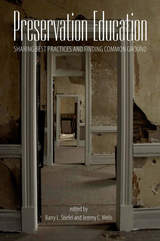
Preservation Education
Sharing Best Practices and Finding Common Ground
Barry L. Stiefel
University Press of New England, 2014
Over the past twenty years, there has been a fundamental shift in the institutional organization of historic preservation education. Historic preservation is the most recent arrival in the collection of built environment disciplines and therefore lacks the pedagogical depth and breadth found in allied endeavors such as architecture and planning. As the first degree programs in preservation only date to the 1970s and the first doctoral programs to the 1990s, new faculty are confronted with pedagogical challenges that are unique to this relatively nascent field. Based on a conference that included educators from around the world, Barry L. Stiefel and Jeremy C. Wells now present a collection that seeks to address fundamental issues of preservation pedagogy, outcome-based education and assessment, and global issues of authenticity and significance in historic preservation. The editors argue that the subject of the analysis has shifted from, “What is the best way to fix a historic building?” to, “What are the best ways for teaching people how to preserve historic properties (and why) according to the various standards that have been established?” This important reconsideration of the state of the field in historic preservation education will appeal to a broad audience across numerous disciplines.
[more]
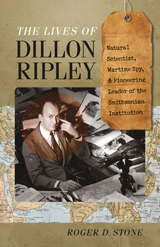
The Lives of Dillon Ripley
Natural Scientist, Wartime Spy, and Pioneering Leader of the Smithsonian Institution
Roger D. Stone
University Press of New England, 2017
A Yale-educated Renaissance man, S. Dillon Ripley was a “courtly, determined, hugely ambitious, energetic, funny, and colorful ornithologist, conservationist, and cultural standard-bearer” who led the Smithsonian Institution for twenty years, during its greatest period of growth. During his watch, from 1964 to 1984, the SI added eight new museums and seven new research centers and began publication of the Smithsonian magazine. It was Ripley’s vision that transformed “the nation’s attic” from a dusty archive to a vibrant educational and cultural institution, just as he had transformed Yale’s Peabody museum before it. Prior to his career at the SI, and running parallel with it for the rest of his life, was Ripley’s work as an ornithologist, begun in New Guinea in the 1930s, continued through his PhD from Harvard in 1943, and culminating in his landmark thirty-year project documenting the bird life of India. His lifelong passion for ornithology led him to positions of leadership in worldwide nature conservation. In the midst of these endeavors he was recruited in 1944 to the Office of Strategic Services, a Yalie club at the outset that became the forerunner of the modern CIA. Posted to Ceylon, he recruited and ran agents who reported from and infiltrated Japanese-held Southeast Asia. Roger D. Stone worked with Ripley on the board of the World Wildlife Fund. He has access to the Ripley family’s archives and photos, as well as to the voluminous archives at the Smithsonian and the National Archives, and to over forty hours of transcribed interviews, conducted with Ripley at the Smithsonian.
[more]
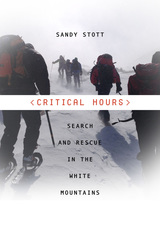
Critical Hours
Search and Rescue in the White Mountains
Sandy Stott
University Press of New England, 2018
A misread map, a sudden storm, a forgotten headlamp—and suddenly a leisurely hike turns into a treacherous endeavor. In the past decade, inexpensive but sophisticated navigation devices and mobile phones have led to alarming levels of overconfidence on the trail. Adding to this worrisome trend, the increasing popularity of ventures into mountainous terrain has led hikers seeking solitude—or an adrenaline rush—into increasingly remote or risky forays. Sandy Stott, the “Accidents” editor at the journal of the Appalachian Mountain Club, delivers both a history and a celebration of the search and rescue workers who save countless lives in the White Mountains—along with a plea for us not to take their steadfastness and bravery for granted. Filled with tales of astonishing courage and sobering tragedy, Critical Hours will appeal to outdoor enthusiasts and armchair adventurers alike.
[more]
READERS
Browse our collection.
PUBLISHERS
See BiblioVault's publisher services.
STUDENT SERVICES
Files for college accessibility offices.
UChicago Accessibility Resources
home | accessibility | search | about | contact us
BiblioVault ® 2001 - 2024
The University of Chicago Press









